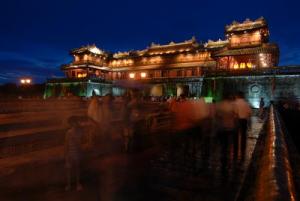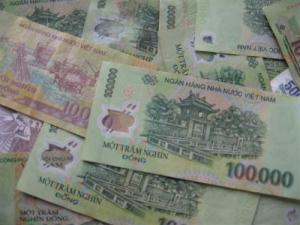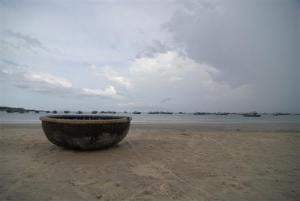Cha Lua – A fine Vietnamese sausage for diverse serves

Cha lua (vietnamee: chả lụa or giò lụa) is known as Vietnamese sausage or Vietnamese ham. Sometimes, it is called as Vietnamese pork roll or Vietnamese pork meatloaf. Having various names, though, Cha lua is made from two basic ingredients pounded lean pork loin and very good fish sauce, wrapped in banana leaves and boiled. Cha Lua is popular across the country as a fine and a common dish. The boiled pork paste is so tasty and has special fragrance of infused banana leaves from boiling process.
Cha lua is a very traditional fine dish of Vietnamese cuisine. Although culinary taste differs from the North, the Middle and the South of Vietnam, people have a common dish on a traditional Tet menu. Cha lua or Gio lua is a must have item. It is served along with Banh chung (square sticky rice cake), Banh tet (cylindrical sticky rice cake) in almost dinning table of Vietnamese families. For the rest of the year, however, Cha lua is served well with anything from Banh mi (Vietnamese Baguette), Banh day (sticky rice cake), Banh cuon (Steamed rice rolls), Xoi (sticky rice) and variety of noodle dishes such as Bun moc, Bun thang. It can simply serve with rice in a daily meal of Vietnamese families. Obviously, Cha lua is a simple cooking but special dish. It goes well with others and it is easy to taste for almost everyone.
Cha lua is made from very simple ingredients but in fact it requires lots of experience to select the finest ingredients.
- Pork: it must be fresh. The perfect meat is lean pork loin and it must be selected from freshly processed meat when it is still warm.
- Fish sauce: very good fish sauce, usually it uses Nuoc Mam Nhi (Nhi fish sauce)
- Banana leaves: the greenest and freshest ones. Having a delicious Cha lua depends on the combination of fresh banana leaves and fresh meat. Many cooking experts have tried to cook Cha lua into a steel cylinder instead of banana leaves. It does work but it fails to have unique infused fragrance. It is likely that there is no substitute for special fragrance of banana leaves.
- Other seasonings: in some local regions, people season meat with a pinch of sugar and pepper to enhance local taste and flavor.
In the past, warm meat will be cut into a small cube and thrown into a stone mortar. It then will be manually pounded by a wood pestle. The pounding technique importantly determines the quality of Cha lua. The person who in-charge pounding meat needs lots of energy. He or she must use both hands to keep the pestle pound continuously and steadily for each batch of meat. In making Cha lua, meat cannot be grounded or chopped because it easily turns dry, fibrous and unsmooth mixture. It should be pounded until it becomes pasty. Today, pounding process is much easier with the help of commercial machine but the traditional method still a preferred technique. A few spoonfuls of good fish sauce are placed into the mixture to season it well. When lifting the pestle without seeing meat sticking around the head, the mixture is smoothly done. At this stage, the mixture is called Gio song (uncooked pork paste) and it can be used to cook various dishes.
Pork paste then places on a banana leaf and tightly wraps into a cylindrical shape, slightly rolls to spread the mixture evenly. Cha lua is wrapped by multi layers of banana leaves to avoid water leak when it is being boiled. It must be firm. Otherwise, pork paste will be ruined. Boiling process is another important factor of determining the quality of Cha lua. Uncooked Cha lua will be submerged vertically into boiling water and fully covered with water. Temperature of boiling water must maintain at the same level all the time. For one kilogram of Cha lua, it takes approximately one hour to finish. The correctly-boiled Cha lua can be stored at room temperature within one week. When it is opened, however, Cha lua must be kept in the fridge. When serving, a good quality Cha lua has a color of white but lightly pink with a few tiny holes on the surface.
Cha lua is thought as a simple dish but it carries unique culinary features. From ingredients selection to raw mixture pounding to boiling process, steps require much more attention to detail to make a delicious Cha lua. Made from just two basic and simple ingredients of pork and fish sauce, it can serve as a single dish or goes well with any others all year long. Many food lovers fall in love with Cha lua because of its diversity. In Vietnam, there are many well-known Cha lua makers. One of the most famous northern villages in making Cha lua is Uoc Le, Thanh Oai, Ha Tay Province. At the village, traditional methods and techniques have passed through generations. It is a great culinary culture aims to respect and retain the tradition of Vietnamese culinary art.









